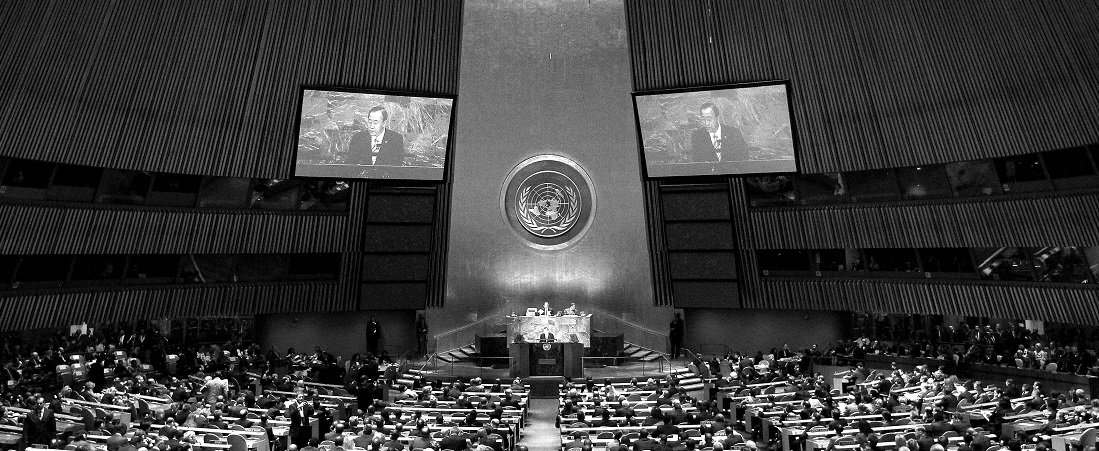There’s an evolution that many organisations go through when they turn to digital, three different models that they go through. The world of diplomacy has been no different.
It starts with the ‘head in the sand’ model. Hiding from ‘new media’ in the hope that this nonsense will go away. The primary symptom of this stage is people using words like ‘new media’, ‘e-media’ and maintaining that social platforms are ‘all about what people had for breakfast’.
The next step is the panic reaction to step one. The digital team model. This involves hiring ‘specialists’ into an organisation and setting them loose on the web and social media. The main sign of this is a desperate hiring of ‘young people’ in the belief that ‘young people’ are the only one who understand this sort of thing. The main symptoms of this include a great deal of managerial relief that this is now someone else’s problem, and then ignoring the specialists anyway.
Step three take after this is the realisation that those ‘young people’ may understand Twitter – but they don’t understand the business, diplomacy in this case. And that the business of diplomacy and policy is much harder to understand than intuitive social media platforms. The next phase, therefore, is the ‘mainstreaming’ of digital into the body corporate. In foreign ministries, this means the use of digital platforms by policy people, by those implementing that policy, and, has been said before, moving digital diplomacy beyond just communications.
That’s the challenge to foreign ministries – to truly embed digital technologies to re-write how diplomacy is done. To innovate beyond just sticking the word ‘innovation’ in a job title, to use digital to crowd-source around policy and to be humble enough to allow that to genuinely inform policy direction; to use it to perform consular services with greater effeciency and, most of all, to use it to forge new diplomatic relationships.
That last is the greatest challenge. Just as foreign ministries become technically, if not necessarily culturally, equipped to perform digital diplomacy, so those same technologies have changed the landscape they work in, and the relationships they need to work to.
People have always been able to group together for reasons other than physical geography and in traditional notions of nationhood, but now those alliances may be religious or corporate; economic or social, and are liable to be transnational. The challenge for diplomats is that digital diplomacy is no longer a geeky mirror to the world they already live in, but a vastly more fluid and more highly populated one where the significant figures have no compulsion to react to the presence of middle-aged people in suits and glasses. In the digital sphere, these new groupings are every bit as legitimate, and often more vocal, than groupings decided by borders and flags.
The obvious example is the grotesque social media activity of ISIS. There’s no corporate foreign ministry tweet that can act as a takedown of a video of a beheading. It’s way beyond communications – and a digital strategy that can change the minds and behaviours of ISIS’ extremist audience, while using technology to try and pin down the whereabouts of the murderers is a start, and is a blurring of communications and monitoring, surveillance and physical action – soft and hard power in unison. Simple to write, much harder to envisage, and far, far harder to deploy.
These non-state actors do not have the mechanics of traditional diplomacy, where ambassadors meet ministers in front of 19th century paintings in the grandest buildings they can find. Those who the diplomat must engage with have shape-shifted and conversations and action is difficult with people who don’t share the same view of the rule of law; soft power is harder when faced with terrorists who debate the merits of Jumanji on Twitter, and digital diplomacy is harder when groupings are fluidly forming in both public and hidden areas of the web.
It could be that a diplomat needs new skills to to engage with these groups – or it could be that diplomacy itself becomes more fluid and foreign ministers learn to deliver diplomacy through third parties, though groups which are not state-driven and are better equipped to make connections. Just as British soft power has been happy to rely on icons such as David Beckham, so might digital soft power be delivered by trusted intermediaries, whether they be through social media groups, individuals with digital influence or through new mediums. Diplomacy through Minecraft perhaps. Which may seem no more crass in a few years hence than governments connecting through Facebook did a few years past.
For a parallel, look at the news market – for years dominated by familiar organisations. Now those organisations find their power greatly reduced as we see information delivered to us by individuals, by social media, and by upstart companies. News is a vastly diffuse business where the old names are part of a much bigger environment. It may be that digital delivers similar change in diplomacy too – with familiar faces and methods still a significant part of the landscape, but diplomacy an activity more and more enacted between influencers and upstarts forging transnational alliances and engaging in new forms of diplomatic engagement.
The evolution of digital diplomacy has a way to go yet

